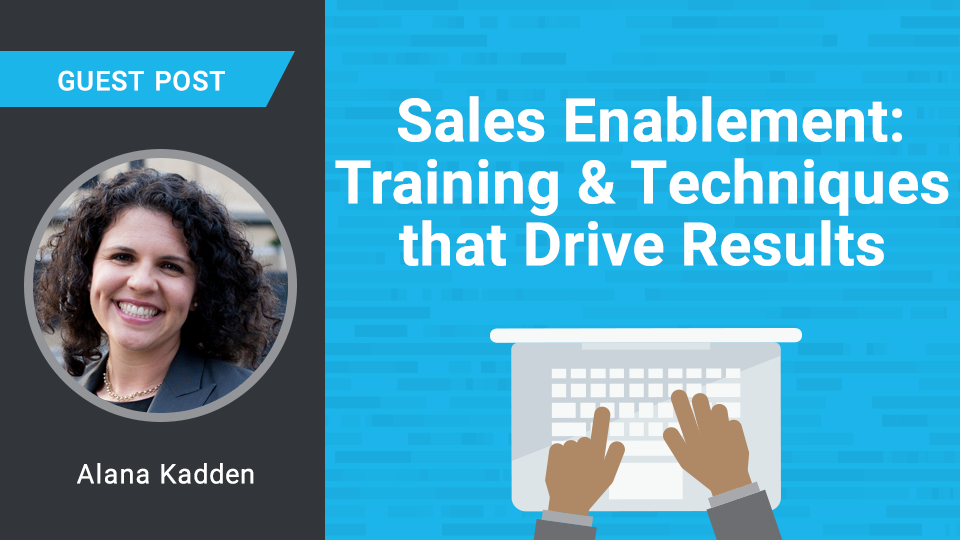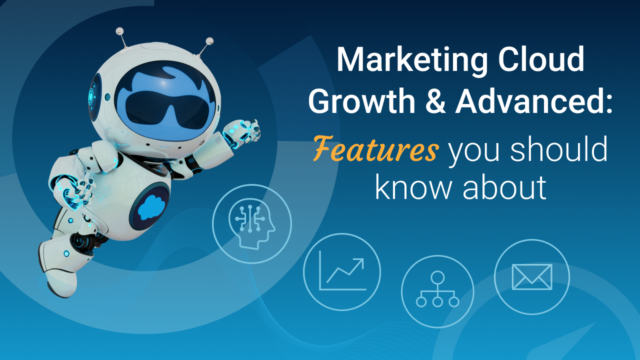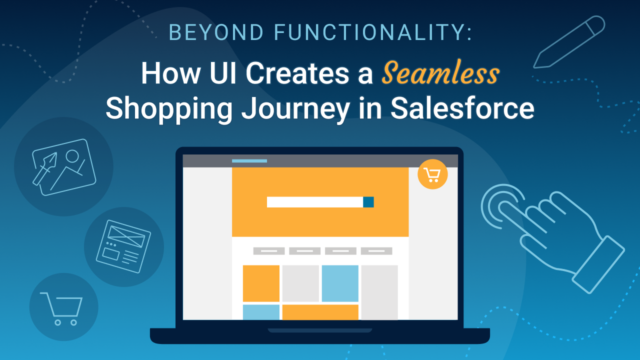Alana Kadden started her career at Salesforce before co-founding Inqune: a consulting firm that empowers startups to grow quickly by creating programs to onboard and develop employees. You can connect with her at alana@inqune.com
Recently, I sat down with Alana to chat about Sales best practices, how to find new talent for your team, and Sales enablement training and techniques.
How can Sales leaders set realistic goals for their team?
Begin with the end in mind.
Leadership needs to be really honest about what their goals are, what average selling price should be and who the ideal target customers are. Then it’s about communicating those goals so Sales understands, “Hey, here’s what’s expected.”
If we think about the end goal then we can start to work backwards. Creating a vision that drives measurable objectives and employee incentives is something Salesforce does really well. Their V2MOM is an excellent example of a system for communicating leadership’s goals to achieve alignment throughout the entire organization. Editor’s note: for more on how to create a V2MOM, check out this free Salesforce training.
Can you give us an Example?
Obviously everyone wants to sell a ton and really fast – but you need to get really specific about what your goals are and where you are compared to those goals.
We have one client with a revenue goal, but they are also looking for customers in a particular industry. Through a combination of Sales enablement training and tools, as well as compensation alignment, we’re able to shift behavior to target that industry.
What real impact do apps and software tools have on how salespeople sell?
There are a lot of tools that help sales development automate tasks, but often it’s not as simple as solving the problem with technology. To unlock the true value of those tools, a human element is necessary – that’s when adoption becomes the challenge.
SDRs that use things like Salesloft are an exception, because they’re so hungry for information and tools. However, without accountability, salespeople will use zero tools.
To drive accountability you have to think about, what do salespeople see as connected to driving their goals? What is the leadership involvement in terms of what tools are important?
Most of the time Sales leadership says, “We have all these things but nobody is using anything.” My answer is, of course they’re not using Salesforce because your Sales VP never manages pipeline from that tool.
So, how do you drive adoption?
It all comes back to what the organization’s goals are and what leadership style will support those goals. Those are the two things that I really look at. For Enterprise sales reps, who have been in the space for 20 plus years , changing behavior is incredibly hard. I’ll frequently say to clients, you can buy that tool – but I don’t think you’re going to see any adoption because it seems like you, as the head of Sales, aren’t going to drive that.
How do you prove the ROI of good Sales training?
With long Sales cycles, it can be difficult to connect good training to the bottom line. It’s harder to say training is responsible but, you can look at your Sales cycles and sales metrics and then look at those numbers after your Sales team has completed training.
When evaluating on-boarding, we look at the decrease in average ramp time (to full quota) after the program is implemented, as well as time to first deal.
For ongoing training, it can be difficult to pinpoint what increases training is responsible for. However, the metrics we use to measure training success include: win rate, close rate, average deal size, average sales cycle length.
While it can be difficult to see quick results if the average sales cycle is long, that is not a reason not to measure for training impact. For long sales cycles, to see a more immediate impact, you can also look at metrics like: average time in each stage or prospecting activities and pipeline generated.
How do you think the industry’s approach to Sales enablement training and techniques have changed over the past ten years?
When I started my career, web software was very new. Training was face to face and hands on – maybe a few webinars. With the rise of the internet, came the shiny object phenomena. Everyone thought, “Great, we never have to fly anybody anywhere.”
Around 2011, the Challenger Sale came out and there was a significant shift in sales methodologies. The Challenger Sale focused on brand new technologies that the customer has never budgeted for. At the same time you had a technology shift, you also had a different type of messaging shift. The messaging went from “Ask your customers a lot of questions and be very consultative,” to “tell your customers what to do.”
Today, companies that are small and trying to cut costs, tend to underinvest in training. They either try to do it all virtually or they’re too busy to do anything. In shifting away from the classroom type training, a lot was lost around how do we continue to train people effectively in a combination of virtual and face to face.
It’s become clear that virtual-only programs don’t have the same impact, and the best programs are a combination of self-guided, virtual instructor led, and classroom based.
What is the biggest misconception about Sales enablement?
That Sales enablement is a one shot deal.
It’s not an immunization, it’s more like a diet and exercise regimen. We try and work with people to create sustainable programs.
What gaps do you see in enterprise Sales training programs?
We’re usually brought in to build on-boarding programs. People take on-boarding very seriously. The gaps I tend to see are in two areas. The first is Sales and Marketing alignment. Agreeing on what the mutual goals are, how do we get there, and then assigning roles and responsibilities.
The second is, really choppy best practice sharing. Many organizations struggle to create a culture of ongoing best practice sharing and learning. With one of our clients, we set up a call twice a month. The Sales reps would each share one win review, one loss review, and one sales tip.
It’s not very heavy, and it doesn’t take a lot of time to prepare. But it creates the type of culture where we talk about wins, we talk about loses, and we call people and ask for advice. That call is an example of a formal event, but what you get from that is people who start to do that informally.
It’s about creating space to say: it’s okay to talk about deals like this. At Salesforce, we had shared success calls that happened every week and there are still people from Salesforce I will call and say, “I need to talk through a deal with you.”
How do you help companies align Sales and Marketing?
The first step is labeling the problem. Often when we show up there are already entrenched issues going on. We first have to unpack what’s not going well and talk about where things need to be.
Step two is creating a shared vision for the two departments using the objectives, strategies, key results, and company vision that’s already in place.
A lot of the time we have them create a workflow and a pipeline to help identify: here are the things Marketing does that feeds into Sales, here’s the Sales process, and here’s who’s responsible for what.
Clearly defining those handoffs, and what happens and when, helps align Sales and Marketing.
How do you work with clients to hire candidates who are great cultural fits but lack requisite skills?
A couple of our clients really caught onto the idea of manufacturing talent. For a while, companies were hiring experienced Sales reps away from other firms. The salaries kept going up and up and reps kept jumping from place to place. Companies realized they needed to find smart people, who had either similar experience or raw skills, and train them.
Similar to IBM and Salesforce, these companies create, in a sense, internal universities. They take new talent coming out of school and give them the skills they need to do their jobs. They get talent that is junior and cheaper, and in return, companies give their new hires the cache of having worked for them.
We have several clients that run internal academies that take new grads and turn them into sales people or Salesforce consultants. For the consulting academy, they use a program we created where we teach them about consulting, technology project management, and the company’s own methodology.
How do you identify these people?
There’s a lot of research to suggest that learning agility is what really separates talent.
During interviews we try and expose candidates to something they’re never seen. Then we look to see how they learn. Do you ask a lot of questions? Do you want to see how someone else does it? Do you take instructions well?
Look for people who are hungry and want to learn something.
Wrap up
If you liked what Alana had to say, head to Inqune’s website to check out their blog.



